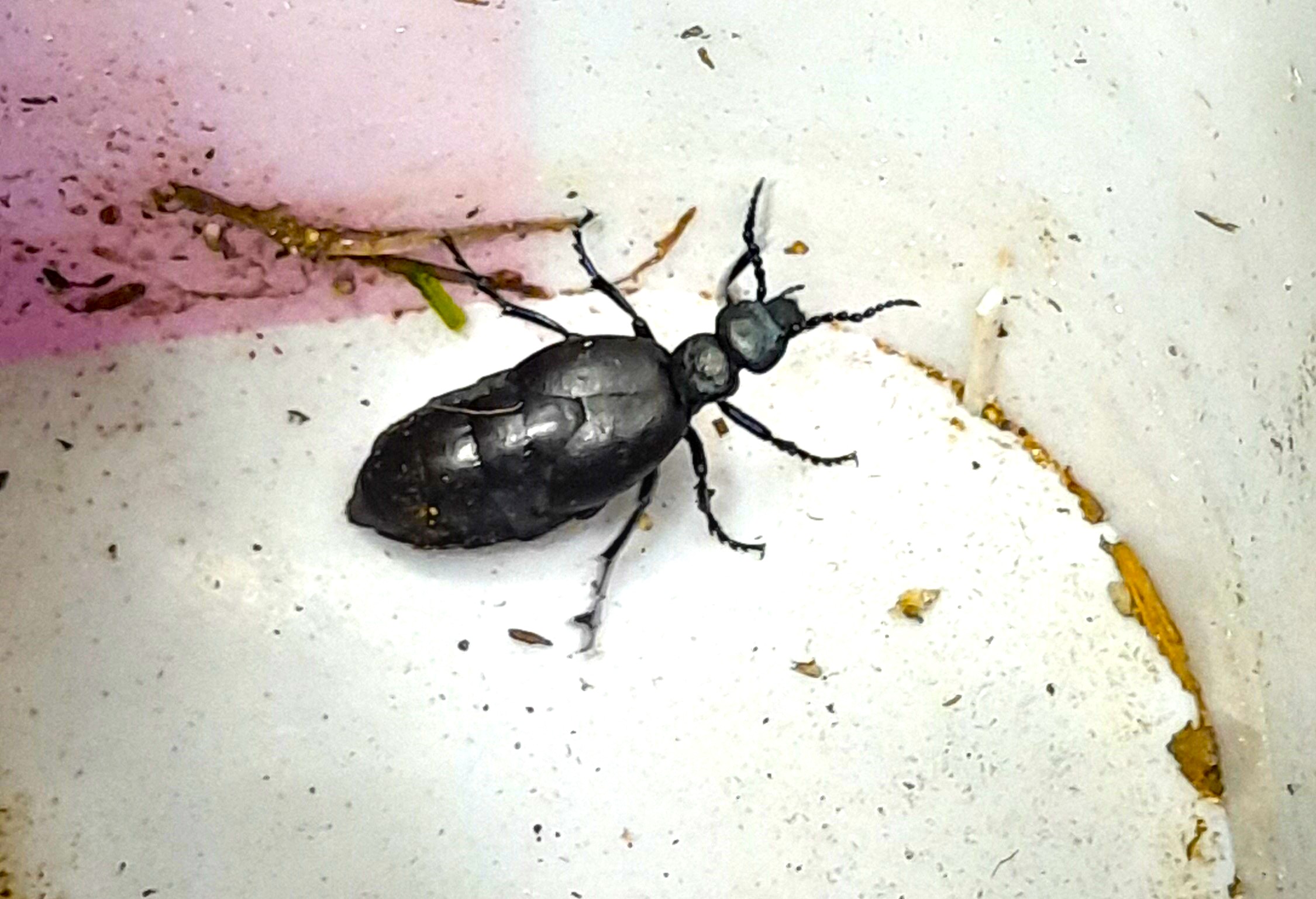Mr C was working on the ramp and spotted this beetle. He brought it up the garden for me to photograph before letting it go again. There are a few different types of oil beetle. The black and violet oil beetles are most similar, but the black has a straight lower edge to its thorax, so I think that is what this is.
Oil beetles are nest parasites. The female digs a nest in the ground and lays up to 1000 eggs. The larvae are called triungulins, which means three claws, after their hooked feet. The larvae climb onto flowers and wait for a solitary mining bee, which they then latch onto, and hitch a lift back to the bee’s nest. Once there they climb off the bee and eat the bee’s eggs and stores of pollen and nectar. The larva grows in the bee’s burrow and emerges as an adult the following year ready to mate and start the cycle again.
They are most often seen from March to July on bare ground, such as footpaths. Their preferred habitat is grassland and heathland, as the adults feed on soft grasses.
Oil beetles are named after the bitter oil-like fluid that they produce from their knee joints to deter predators.
